Q
how much honda civic 2020
The 2020 Honda Civic's price tag in Malaysia varies depending on the trim and specs you go for. Brand-new, you're looking at roughly RM110,000 to RM140,000, with the exact figure hinging on whether you pick the 1.8L or 1.5T engine, and the trim level—S, E, V, or the sporty RS. It's a hit with Malaysian buyers thanks to its solid fuel efficiency, dependable performance, and sleek looks, making it a top choice for city commutes and family use alike.
But remember, when budgeting, you've got to factor in insurance, road tax, and maintenance costs too. The Civic also holds its value pretty well in Malaysia's used car market, which is down to Honda's strong brand reputation and consistent demand for this model. If you're thinking of getting one, I'd recommend heading to an authorized dealer for a test drive and to get the latest pricing. It's also worth checking out used models from different years to see if you can find the perfect fit for your needs and wallet.
Special Disclaimer: This content is published by users and does not represent the views or position of PCauto.
Related Q&A
Q
How much does it cost to replace a timing belt on a 2018 Honda Civic?
The cost to replace the timing belt on a 2018 Honda Civic typically ranges from RM800 to RM1500. The exact price depends on the type of repair shop, whether original or aftermarket parts are used, and if components like the water pump are replaced at the same time. A genuine belt kit plus a water pump can push the total cost close to RM2000. As a critical engine component, the timing belt should be replaced every 60,000 to 100,000 kilometers or around 5 years. A broken belt can cause catastrophic damage from valve-piston collisions. Beyond the belt itself, professional technicians usually recommend replacing the tensioner and idler pulleys together for system stability. Note that some models use a timing chain design which doesn’t require regular replacement. When choosing a repair shop, verify they use legitimate parts and have Honda-specific experience—improper installation shortens belt life. Regularly checking for cracks or wear on the belt also helps prevent sudden failures.
Q
Is the 2018 Civic a safe car?
The 2018 Honda Civic shines when it comes to safety, packing in a solid lineup of active and passive safety tech. You've got your standard stuff like Vehicle Stability Control, Anti-lock Braking System, multiple airbags, and a rigid body structure—all working together to keep occupants protected when crash tests put it to the test. Step up to the higher trims, and you'll get Honda SENSING, which adds some pretty advanced features: adaptive cruise control, lane keeping assist, and collision mitigation braking, just to name a few. These definitely give peace of mind on the road. Behind the wheel, the Civic feels steady and the brakes are reliable too, making it a solid choice for everyday driving. If you're looking to dig deeper into car safety, checking out crash test ratings is a good move—think ASEAN NCAP or Global NCAP scores. They give you a better overall picture of how a car holds up. And don't forget, regular maintenance—keeping an eye on tires, brakes, and other key parts—is just as crucial for staying safe out there.
Q
How is the 2018 Civic's ride quality?
The 2018 Civic delivers well-balanced ride comfort in its class. The suspension tuning leans sporty but still works for daily use – the front MacPherson strut and rear multi-link setup does a solid job filtering out small road vibrations. That said, rear passengers will feel noticeable jolts when going over speed bumps or rough roads, which ties back to its stiffer spring rates.
On the NVH front, tire noise gets a bit pronounced at highway speeds, but engine insulation is nicely done. The 1.5T turbo engine stays at low revs during cruising, keeping things calm. The seats have just the right amount of padding – supportive enough for long drives without feeling too firm. Steering feel is sharp with good road feedback, not overly sensitive.
Notably, this generation Civic has 25% stiffer body rigidity than the previous model, resulting in more stable cornering posture. This design boosts handling while also indirectly improving ride stability during quick lane changes. If comfort is a higher priority, go for the factory 17-inch wheel option – it offers better shock absorption compared to the 18-inch version. And don’t forget to regularly check tire pressure and suspension bushing condition; both have a big impact on overall ride quality.
Q
Is a used 2018 Civic a smart buy now?
The 2018 Honda Civic is a solid value pick as a used car right now. It strikes a good balance between power, space, and fuel economy. The 1.5T turbo engine delivers plenty of pep while keeping gas mileage reasonable, making it good for both daily commutes and longer drives. The interior is roomy, especially the rear legroom which beats out many competitors, and the trunk space is enough for family use too.
In terms of reliability, it has a pretty low failure rate, routine maintenance costs are reasonable, and parts are easy to come by at decent prices. But keep an eye out for the oil dilution issue that some early batches had—definitely check the service records or get a professional inspection.
Used prices have stabilized now, offering a nice discount compared to buying new, but when you buy, pay attention to mileage, accident history, and maintenance upkeep. I’d recommend looking for a car still under the original factory warranty or consider purchasing an extended warranty.
The Civic has a big local presence, so it’s relatively easy to resell when you’re ready, and its resale value is above average for the class. You could also check out the same-year Toyota Corolla or Mazda3, but the Civic has the edge when it comes to driving fun and interior space, making it a great fit for buyers who want practicality with a bit of driving enjoyment.
Q
What should I pay for a 2018 Honda Civic?
The used car prices for the 2018 Honda Civic typically range from RM60,000 to RM90,000, depending on factors like vehicle condition, mileage, trim level, and maintenance records. The 1.8L S trim is relatively more affordable, while the top-spec 1.5L Turbo RS is closer to the upper end of that range. It's advisable to check specific quotes through used car platforms or dealerships before buying, and also pay attention to inspecting for accident history or regular maintenance certificates. As a popular model, the Civic holds its value well and has a solid reliability record, especially the 1.5T turbo engine which strikes a good balance between power and fuel efficiency, making it suitable for daily driving. If you're on a tighter budget, you could consider competitors of similar age, but be sure to compare configurations and after-sales support. Additionally, if financing the purchase, it's recommended to compare interest rate plans from different banks to reduce long-term ownership costs.
Q
What is the AC problem in the Honda Civic 2018?
The 2018 Honda Civic has air conditioning issues mainly centered around inconsistent cooling performance or reduced airflow, which are usually related to condenser leaks, low refrigerant levels, or compressor failures. Some owners have reported that the AC efficiency drops significantly in hot weather. If you encounter such problems, it's advisable to first check the refrigerant pressure and inspect the condenser for damage. Regularly replacing the cabin air filter in daily use can effectively maintain air circulation efficiency, while avoiding prolonged use of the recirculation mode to prevent overloading the system. It's important to note that the AC system performance of all vehicles will naturally degrade over time, so regular maintenance is key—like checking the refrigerant condition every two years and cleaning dust and debris from the condenser fins to improve heat dissipation. If you experience intermittent cooling failures, it might be due to a clogged expansion valve or poor electrical connections, which require diagnosis by a professional technician using pressure gauges. Additionally, using a sunshade when parking in summer to reduce interior heat buildup can significantly lower the load on the AC when starting up.
Q
What engine is in a 2018 Civic?
The 2018 Honda Civic offers a range of engine options depending on the market. The most common is the 1.5-liter turbocharged four-cylinder (code-named L15B7), which features VTEC technology. It puts out around 174 horsepower and 220 Nm of peak torque, mated to either a CVT or a 6-speed manual transmission. It delivers a balanced performance with excellent fuel economy, making it perfect for daily driving. Additionally, some regions get a 2.0-liter naturally aspirated four-cylinder (code-named K20C2) with 158 horsepower and 187 Nm of torque. While it's a bit less powerful than the turbo version, it's simpler in structure and has lower maintenance costs. It's worth noting that the 2018 Civic Type R comes with a high-performance 2.0-liter turbo engine (code-named K20C1), though that's a special edition model. For most buyers, the 1.5T engine is the more mainstream pick. It provides plenty of torque at low revs, and Honda's Earth Dreams technology ensures good fuel efficiency, traits that help it stand out in its class.
Q
How many miles can a 2018 Civic last?
The 2018 Honda Civic can typically last between 200,000 to 300,000 miles (about 320,000 to 480,000 kilometers) with regular maintenance and proper use. Its actual lifespan depends on factors like driving habits, maintenance frequency, and road conditions. The car's 1.5T turbocharged engine or 2.0L naturally aspirated engine are known for reliability, paired with either a CVT transmission or 6-speed manual, making the powertrain quite durable. Regularly changing key fluids like engine oil, transmission fluid, and brake fluid, along with timely inspections of tires, brake pads, and suspension components, can significantly extend the vehicle's life. It's worth noting that the Civic holds its value well and performs strong in the used car market, which is another indicator of its long-term dependability. If you frequently drive in congested cities or use it for short trips, consider shortening maintenance intervals to reduce carbon buildup and mechanical wear. Additionally, the hot and humid climate in Southeast Asia can affect rubber parts and electronic components, so regular checks on these items can help prevent potential issues. Overall, with proper care, this car is more than capable of accompanying you for over 10 years or even longer.
Q
What is the gas mileage on a 2018 Honda Civic?
The fuel efficiency of the 2018 Honda Civic varies depending on the powertrain configuration. The version equipped with a 1.8-liter naturally aspirated engine has a combined fuel consumption of approximately 6.5 liters per 100 kilometers, while the 1.5-liter turbocharged model is more efficient, with a combined fuel consumption of around 5.8 liters per 100 kilometers. Actual fuel consumption may vary slightly based on driving habits, road conditions, and maintenance status. Thanks to the optimized pairing of the Earth Dreams technology engine and CVT transmission, this car strikes a good balance between fuel economy and power response, making it suitable for daily commuting and long-distance driving. To further improve fuel efficiency, it is recommended to regularly maintain the air filter and tires, avoid sudden acceleration or speeding, and keep an eye on whether tire pressure is at the recommended level. Among models in its class, the Civic's fuel efficiency is above average, balancing practicality and economy, making it a solid choice for consumers who value vehicle operating costs.
Q
What is the trade-in value of a 2018 Honda Civic?
The used car valuation for a 2018 Honda Civic typically ranges from RM70,000 to RM90,000, with the exact price depending on factors like vehicle condition, mileage, trim level, and service history. The 1.8L S trim, being the base model, usually sits at the lower end, while the top-spec 1.5L Turbo RS can get close to the upper limit. There are a few key points to consider when valuing a used Civic. First is mileage – ideally around 15,000 km per year; anything over 20,000 km annually might impact the price. Second is service records – a complete dealer service history can boost residual value by about 5% to 8%. On the flip side, accident-damaged or flood-affected cars will take a huge hit, depreciating by 30% to 50%. It’s a good idea to get a free appraisal from an authorized Honda dealer before selling and also compare quotes from multiple used car dealers. With the recent increase in used car supply, there might be more room for negotiation. If you’re thinking about trading it in for a new car, some dealers offer trade-in bonuses that could be better than selling directly, but make sure to check if the new car discount and old car valuation balance out. Understanding these factors will help you get a fairer price in the transaction, and it’s also recommended to get a vehicle inspection report from a third-party service to build buyer confidence.
Popular Cars
Model Year
Car Compare
Car Photo
Latest Q&A
Q
How much is 1 horsepower?
Horsepower (hp) is a unit of power that measures how much work a horse can do in one second—specifically, lifting 550 pounds one foot off the ground. In metric terms, that’s roughly 745.7 watts. The term was coined by engineer James Watt to compare steam engines to the workhorses they were replacing.
In cars, horsepower tells you how strong an engine is, but it’s not the whole story. Torque, weight, and drivetrain efficiency all shape how a car actually feels on the road. Also worth noting: there are slight variations in how horsepower is measured. For example, metric horsepower (PS) is about 0.986 hp, though the difference is negligible in everyday talk.
When shopping for a car, don’t just fixate on horsepower. Think about how you’ll use it. A small turbocharged engine might deliver better low-end torque for stop-and-go traffic, while a high-horsepower engine could be overkill for city driving. And if you’re looking at EVs, remember their power is often listed in kilowatts (kW)—where 1 kW equals about 1.34 hp. Knowing these conversions helps compare different powertrains more accurately.
Q
How to calculate main engine power?
The calculation of main engine power is usually based on the physical relationship between torque and RPM, with the formula being * * power (kW)=torque (Nm) x RPM ÷ 9549 * *, or * * horsepower (HP) in English units=torque (lb ft) x RPM ÷ 5252 * *. In actual measurement, manufacturers will collect data and draw power speed curves under specific operating conditions through engine bench testing, while commonly used calibration values by consumers (such as maximum power) are mostly theoretical peak values. It should be noted that the power on the wheels (the actual power transmitted to the wheels) may be lower than the engine output value due to factors such as transmission efficiency and transmission losses. This is also why modification enthusiasts often verify actual performance through chassis dynamometers. In addition, technologies such as turbocharging and variable valve timing can optimize combustion efficiency and indirectly improve power performance, while electric vehicles directly output instantaneous maximum torque through motor characteristics, and the power calculation logic is different from traditional internal combustion engines. If you have doubts about the specific vehicle model data, you can refer to the official technical manual or professional evaluation report.
Q
What does a 1.6 litre engine mean?
A 1.6-liter engine means the total displacement of all cylinders is 1.6 liters—in other words, the combined volume swept by the pistons from top to bottom dead center is 1,600 cubic centimeters. Generally, a larger displacement means more power, but it also leads to higher fuel consumption. Engines of this size are very common in the local market because they strike a good balance between performance and fuel efficiency, making them ideal for daily commuting and family use.
Displacement is one of the key indicators of engine performance, but real-world performance also depends on other technologies, like turbocharging, fuel injection systems, and variable valve timing. These can make engines of the same displacement produce different power outputs and efficiency levels. For example, some 1.6L turbocharged engines can deliver power close to a naturally aspirated 2.0L engine while being more fuel-efficient.
When choosing an engine, it’s not just about displacement—you should also consider your driving habits and needs. If you frequently drive long distances or at high speeds, a bigger engine might be preferable, while a smaller turbocharged unit could be the smarter choice for city driving.
Q
Is a 1.6 L engine good?
The 1.6L engine strikes a good balance for everyday driving. It delivers enough power for city commutes and occasional highway trips while maintaining decent fuel efficiency. Maintenance costs are reasonable too—a practical choice for family cars.
Naturally aspirated 1.6L engines are particularly reliable, with mature tech that prioritizes durability and low upkeep. If you want extra punch, turbocharged 1.6L variants can match the performance of some 2.0L naturally aspirated engines without sacrificing much fuel economy.
That said, your driving habits matter. Frequent long-distance drivers might find 1.6L a bit underwhelming, but it’s more than adequate for urban errands. Keep in mind, performance varies across brands—always test-drive before deciding.
Q
Is a 1.5 litre engine good?
Whether a 1.5L engine is right for you depends on your driving needs. For city commuting and daily errands, this displacement performs exceptionally well—it’s fuel-efficient, cheaper to maintain, and ideal for stop-and-go traffic. Plus, many modern 1.5L turbocharged engines now deliver power close to traditional 2.0L naturally aspirated ones, easily handling most family trips. If you’re mainly driving in urban areas with occasional highway runs, a 1.5L is plenty. But if you frequently haul heavy loads uphill or crave sharper throttle response, you might want to consider a larger engine. Keep in mind, though: advancements like optimized intake/exhaust systems and direct injection have given smaller turbo engines decent low-end torque, which is a big help in crawling traffic. So beyond displacement, pay attention to how the engine is tuned and what tech’s under the hood.
View MoreRelated News

Honda Civic Interior Revealed: A Comprehensive Analysis of Civic’s Interior Charm
Kevin WongJul 10, 2025
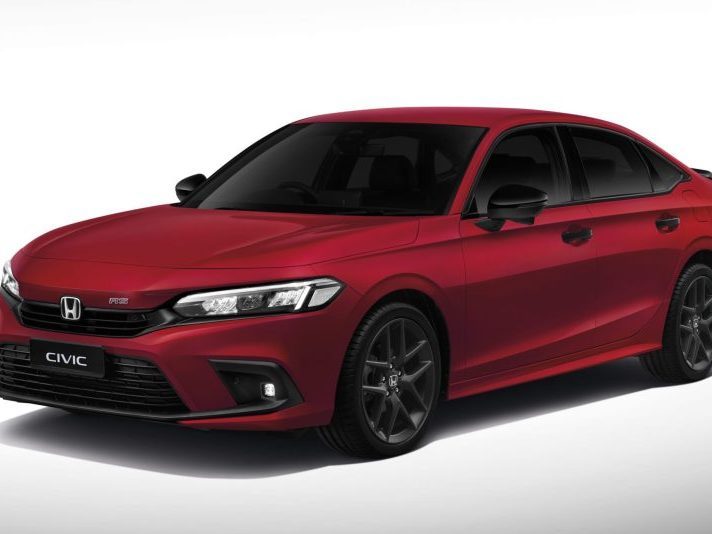
Honda Civic Price Revealed: The Most Detailed Buying Guide!
AshleyApr 8, 2025
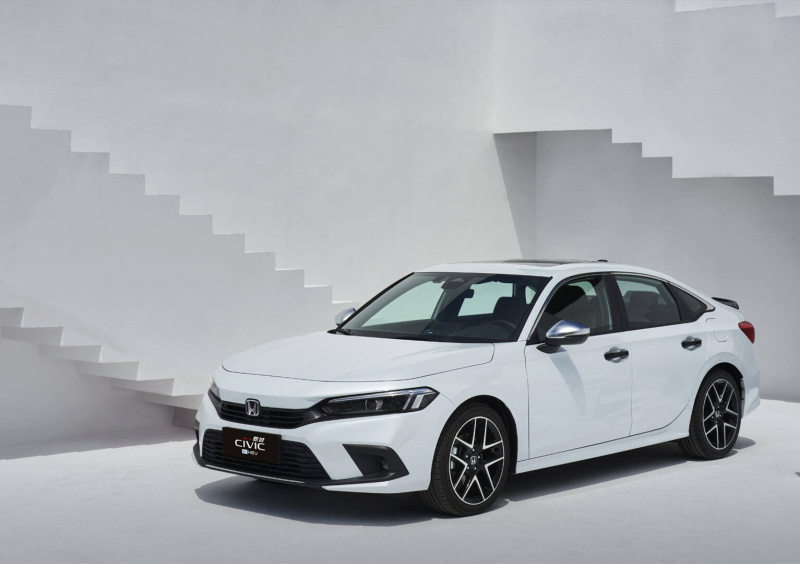
Whether it's about appearance or handling, why do young people all like Honda Civic?
WilliamSep 24, 2024
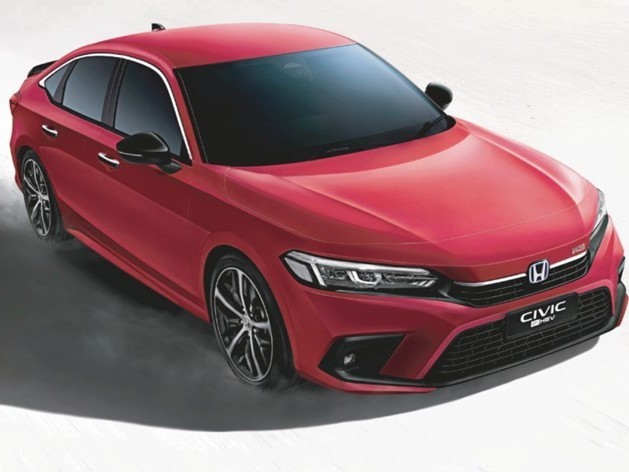
2022 Honda Civic: Hybrid car with the fastest acceleration, lowest fuel consumption, who says eco-friendly cannot be fast
JohnSep 3, 2024
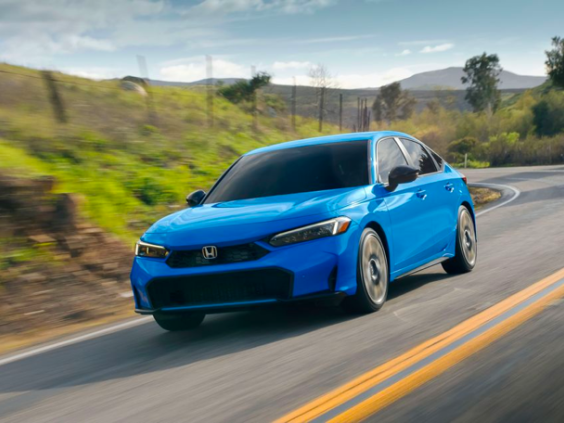
2025 Honda Civic debuts, minor changes in appearance, has 1.5 Turbo model been discontinued?
LienMay 22, 2024
View More





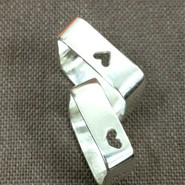







 Cars
Cars




Pros
Cons